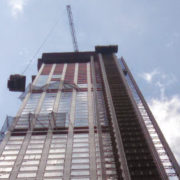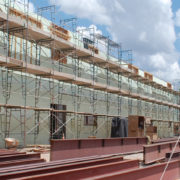Passive Fire Protection in Hospitals
Fire safety including passive fire protection in hospitals is of the utmost importance particularly when considering the number of potentially vulnerable people at risk on the premises. Hospitals could not only find themselves financially liable for millions of pounds in repairs, they could also face the possibility of prison sentences and fines should they be found negligent for not having the correct systems in place. The cost of not complying with the law far outweighs the cost of installing the correct systems and should be a priority for all healthcare facilities.
What is Passive Fire Protection?
Passive fire protection is the use of fire-resistant materials and structural components that look to separate the building into different areas of risk. Essentially, they work to slow the spread of fire and smoke, to protect the structural integrity of the building and to provide time for all occupants of the building to evacuate. Passive fire protection is a component of a total fire protection system that looks to collaboratively suppress and resist fire. Passive fire protection looks to contain fire and is achieved through the installation of columns, walls, floors and doors. Each of these need to prevent structural collapse, heat conduction and the spread of smoke and noxious gases to be considered effective.
Fire Safety and the Law
Lessons from History
What Passive Fire Protection is required in Hospitals?
- Fire Doors and Compartmentalisation – Hospitals face unique challenges when considering fire evacuation due to the consideration required to be given to vulnerable patients receiving care. The condition of these patients may result in total evacuation not being possible. With this in mind, fire doors and compartment lines are essential for the building’s fire protection strategy, preventing the spread of fire and smoke and allowing time for patients to be recovered. Compartmentalisation is critical when containing a fire and is achieved through the use of fire resistance floors, walls and cavity barriers. All fire-resistant materials are rated to withstand fire for a certain amount of time. Currently, the fire doors in NHS hospitals offer 30 minutes of protection with some offering more in buildings containing more vulnerable patients where evacuation may take longer.
- Fire Door Survey and Restoration – As well as installing the right type of fire doors, it is essential to that they are checked regularly to ensure their efficacy in the event of a fire. With many fire doors being used by the hospital on a daily basis, it is not uncommon for them to be damaged by trolley, wheelchairs and people. Significant damage to a fire door will affect its fire resistance rendering it inoperative. To prevent this from happening a fire door survey by a qualified inspector is recommended. Should fire doors not be compliant, a restoration service can be sought to bring the quality of the door back up to standards and remain compliant.









Leave a Reply
Want to join the discussion?Feel free to contribute!